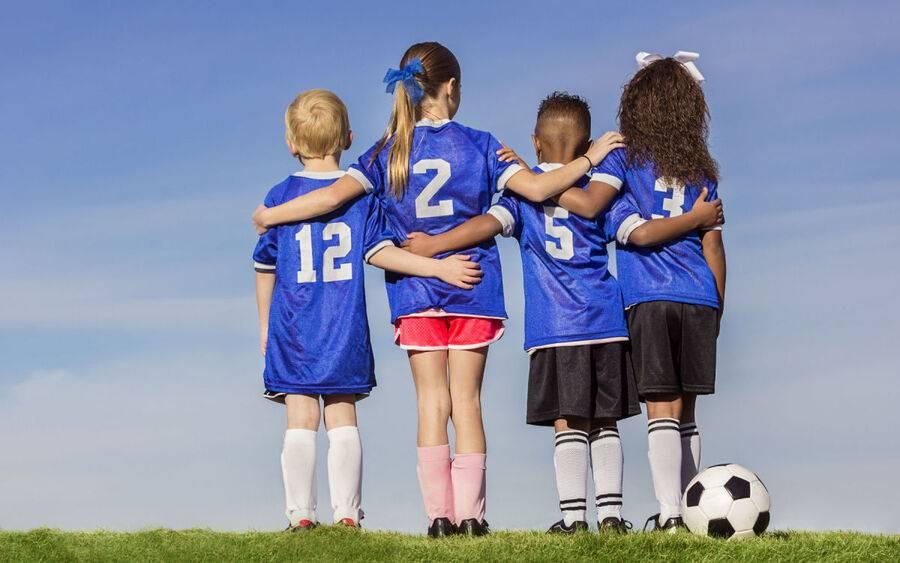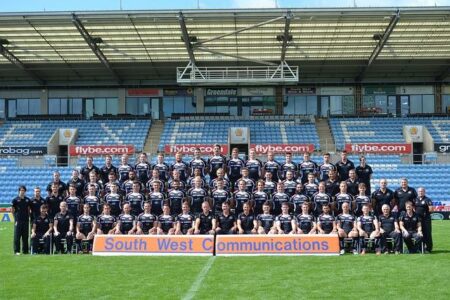As youth sports continue to play a pivotal role in the development of young athletes across the country, a growing number of challenges threaten to undermine their positive impact. In a recent interview with The New York Times, former NFL star Greg Olsen addressed some of the most pressing issues confronting youth athletics today. From concerns over player safety and early specialization to the pressures of commercialization and parental involvement, Olsen offers a candid perspective on what must be done to preserve the integrity and accessibility of sports for the next generation.
Challenges of Safety and Injury Prevention in Youth Sports
Despite the numerous benefits youth sports offer, ensuring safety remains a persistent challenge. Concussions and overuse injuries have surged, prompting experts and former pros like Greg Olsen to voice concerns about current safety protocols. The pressure on young athletes to perform often leads to intense training schedules, which, without proper guidance and monitoring, can result in long-term physical damage. Additionally, inconsistent coaching standards across leagues contribute to gaps in injury prevention, leaving many parents and players uncertain about the adequacy of protective measures.
Key factors complicating safety efforts include:
- Limited access to certified medical personnel during games and practices
- Insufficient education for coaches and parents on injury warning signs
- Inadequate enforcement of return-to-play guidelines, risking premature athlete comebacks
- Equipment disparities, with some youth teams lacking state-of-the-art protective gear
| Common Injuries | Average Recovery Time | Prevention Focus |
|---|---|---|
| Concussions | 2-4 weeks | Helmet use & Protocols |
| ACL Tears | 6-9 months | Strength & Flexibility |
| Sprains & Strains | 1-3 weeks | Warm-ups & Rest |
The Impact of Over-Competitiveness on Young Athletes’ Mental Health
Over-competitiveness in youth sports is increasingly being linked to a troubling rise in mental health concerns among young athletes. According to experts and former NFL star Greg Olsen, the pressure to constantly outperform peers fosters an environment where anxiety, burnout, and depression become commonplace. Instead of focusing on skill development and enjoyment, many young athletes find themselves trapped in a relentless pursuit of wins and recognition, which can severely impair their emotional well-being.
Several key factors contribute to this adverse effect:
- Unrealistic expectations: Coaches, parents, and even athletes often place impossible standards on performance.
- Lack of balance: Excessive training schedules leave little room for social life or rest.
- Fear of failure: Mistakes are sometimes met with harsh criticism rather than constructive feedback.
Below is a snapshot table outlining common mental health symptoms associated with high competitiveness, as observed in recent studies:
| Symptom | Prevalence | Impact | ||||||||||||||||
|---|---|---|---|---|---|---|---|---|---|---|---|---|---|---|---|---|---|---|
| Anxiety | 60% | Reduced focus and increased stress | ||||||||||||||||
| Burnout | 45% | Physical and emotional exhaustion | ||||||||||||||||
| Greg Olsen’s Call for Improved Coaching and Parental Involvement
Greg Olsen has spoken candidly about the crucial role that both coaching standards and parental involvement play in shaping the future of youth sports. He emphasizes that many young athletes are being shortchanged by inconsistent coaching quality, which often stems from a lack of proper training and support for volunteer coaches. Olsen argues that without a solid foundation built by knowledgeable and responsible mentors, kids risk losing interest or facing burnout at an early stage. Beyond coaching, Olsen highlights the impact of parental behavior on young athletes’ development. He calls for a culture shift where parents prioritize encouragement over pressure, making the sporting experience positive and sustainable. Key areas identified by Olsen include:
Greg Olsen on Coaching and Parental Involvement in Youth Sports Greg Olsen stresses that the future success and enjoyment of youth sports heavily depend on the quality of coaching and the behavior of parents. He notes that many young athletes suffer due to inconsistent coaching, often by untrained volunteer coaches, leading to early burnout or loss of interest. Proper training and certification for coaches are essential to create a supportive and knowledgeable environment. Parental involvement also needs a cultural shift-from putting pressure on young athletes to providing encouragement and fostering a positive experience. Olsen highlights three critical areas where parents can improve:
Olsen’s Recommendations: | Area of Focus | Olsen’s Recommendations | If you want, I can also help you with creating talking points, a speech, or other formats based on this content! Strategies to Foster Inclusive and Enjoyable Youth Sports EnvironmentsBuilding environments where young athletes thrive begins with prioritizing both inclusivity and fun. Coaches, parents, and organizations must emphasize positive reinforcement over competition, ensuring every participant feels valued regardless of skill level. Encouraging teamwork through diverse activities and flexible rules can help break down barriers, making sports accessible to children from various backgrounds and abilities. Additionally, providing training for adults involved to recognize and address biases plays a crucial role in shaping a welcoming atmosphere. To systematically embed these values, leagues can adopt clear policies focused on inclusivity that promote respect and empathy. Implementing regular feedback loops with players and families can reveal areas needing improvement and celebrate successes. The following table outlines key strategies alongside their potential benefits for fostering such environments:
Concluding RemarksAs youth sports continue to evolve, the concerns highlighted by Greg Olsen underscore the urgent need for stakeholders to address issues ranging from over-competitiveness to player safety. His candid insights serve as a call to action for parents, coaches, and governing bodies alike to prioritize the well-being and development of young athletes. Moving forward, the conversation sparked by leaders like Olsen will be essential in shaping a healthier and more inclusive future for youth sports across the nation.
Add A Comment
|





